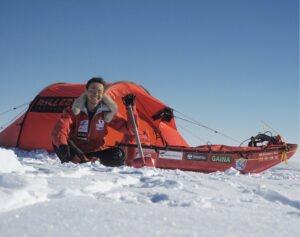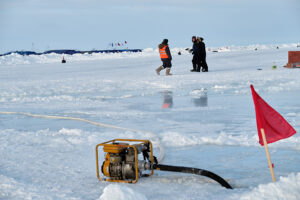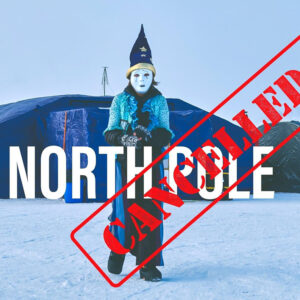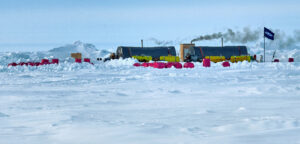In January, a four-man Spanish team completed a 2,500km journey between two research stations in Antarctica, from near Novolazarevskaya to Dome Fuji, and back.
How they traveled was even more exotic than where they traveled. For 52 days, they rode a series of customized sleds with built-in living quarters and powered entirely by kites. Since the project’s inception in 1999, the WindSleds have been used on 11 expeditions and have covered more than 20,000km in Antarctica, Greenland, and Canada.

A plane took them 180km south from Novolazarevskaya (altitude 102m) over a mountain range to their starting point at 3,162m. Here, they had to assemble the sleds in temperatures from -18 to -24°C. It took them over six hours to tie 300 wooden crossbars to the sled runners with utility cord. Photo: Inuit WindSled.

To propel themselves, the team used NASA Para Wing (NPW) kites, with 300m lines. They had 20 of them, to suit a variety of wind conditions, but used one at a time. NASA engineer, Francis Rogallo, and his wife Gertrude Rogallo created the NPW design in 1948. They were initially intended as a self-inflating flexible wing-cum-parachute for the Mercury and Gemini space capsules in the late 1950s. In the end, these early space missions chose conventional round parachutes. However, they have proven an interesting choice for kite-powered explorers, thanks to their low weight, high pull-to-size ratio and the ability to fly in a wide range of wind speeds. To launch the kite, it is placed on the ground, 30º – 35º from the wind direction, and snow is then shoveled on top to stop it blowing away. They then hook up the lines and check for any tangles. When ready, the navigator pulls back on the handles while an assistant lifts the kite upward. When there were no surface winds, the team held the kite aloft five metre-poles, to access currents higher up. Photo: Inuit WindSled.

A side shot of the modular WindSled. Over the years, four configurations have been used. The largest carries up to 2,000kg of cargo, measures 14m long and weighs 500kg. The set-up above measures 11m. All the designs can handle self-supported trips of at least 2,000km, and one model can go up to 7,500km. Photo: Inuit WindSled.

A team member hunkered down in the navigator’s seat clasping the. pogie-covered kite handles. On their longest day, they covered 248km in a 16-hour push. Their slowest days coincided with an area they dubbed the Sea of Tranquility. In this calm region, they once managed a mere 4.5km in a day. Photo: Inuit WindSled.

Two weeks in and over 250km behind them, Manuel Olivera and expedition leader Ramón Larramendi celebrate Christmas with a Havana cigar, rum, and an ultra-lightweight, packable plastic tree. Their communal gift, the Antarctic Christmas Raffle, decided who got to sleep in and who took the nine-hour morning shift. Photo: Inuit WindSled.

In moderate winds, the team glided along at 10 to 15kph. One windy day, they hit 35kph. One of the biggest hazards was sastrugi, those hard snow waves that every polar traveler encounters. The largest sastrugi, half a metre high, had to be steered around. They jumped the smaller ones at speed. The sleds, lashed together Inuit-style rather than nailed or screwed, flexed with the bumps. In the end, only 3 of 300 crossbars broke. Photo: Inuit WindSled.

A team member assesses the lines on one of their kites. Once, their largest kite (150m²) ripped from a 70kmph gust. They had to spend 12 hours sewing it with a needle and thread. Photo: Inuit WindSled.

Camped beside the Plateau Station. This now-inactive American base opened in 1965 and continued, staffed by four scientists and four Navy personnel, until its closure in 1969. Concealed by decades of snowfall, the only signs of its existence now are a few antennae and a 40m tower. Photo: Inuit WindSled.

A team member stands beside the entry ladder inside the Plateau Station. Dangling from the hatch is a line to help them find their way out if lost in the darkness. Even under metres of snow, the temperatures inside were -50ºC. One person remained outside at all times, in case the entrance blew shut or the cracking ceilings caved in from the weight of the snow above. They explored the 200m² interior for two hours. Artifacts included old scientific instruments, typewriters, radiotelephones and well-preserved half-century-old food, such as Campbell soups, cereals, and hot dogs. Photo: Inuit WindSled.

Throughout their route, the team stopped to conduct 11 research projects on Antarctic biology, geology and meteorology. They also tested instruments and techniques destined for NASA’s Mars 2020 mission. Here, the team drills core samples for analysis back in the U.S. Air bubbles and particles within the snow will help scientists better understand climate change. Photo: Inuit WindSled.

Hilo Moreno melting ice samples for a project that detects and identifies biochemical compounds and microbes in solids and liquids. Photo: Inuit WindSled.
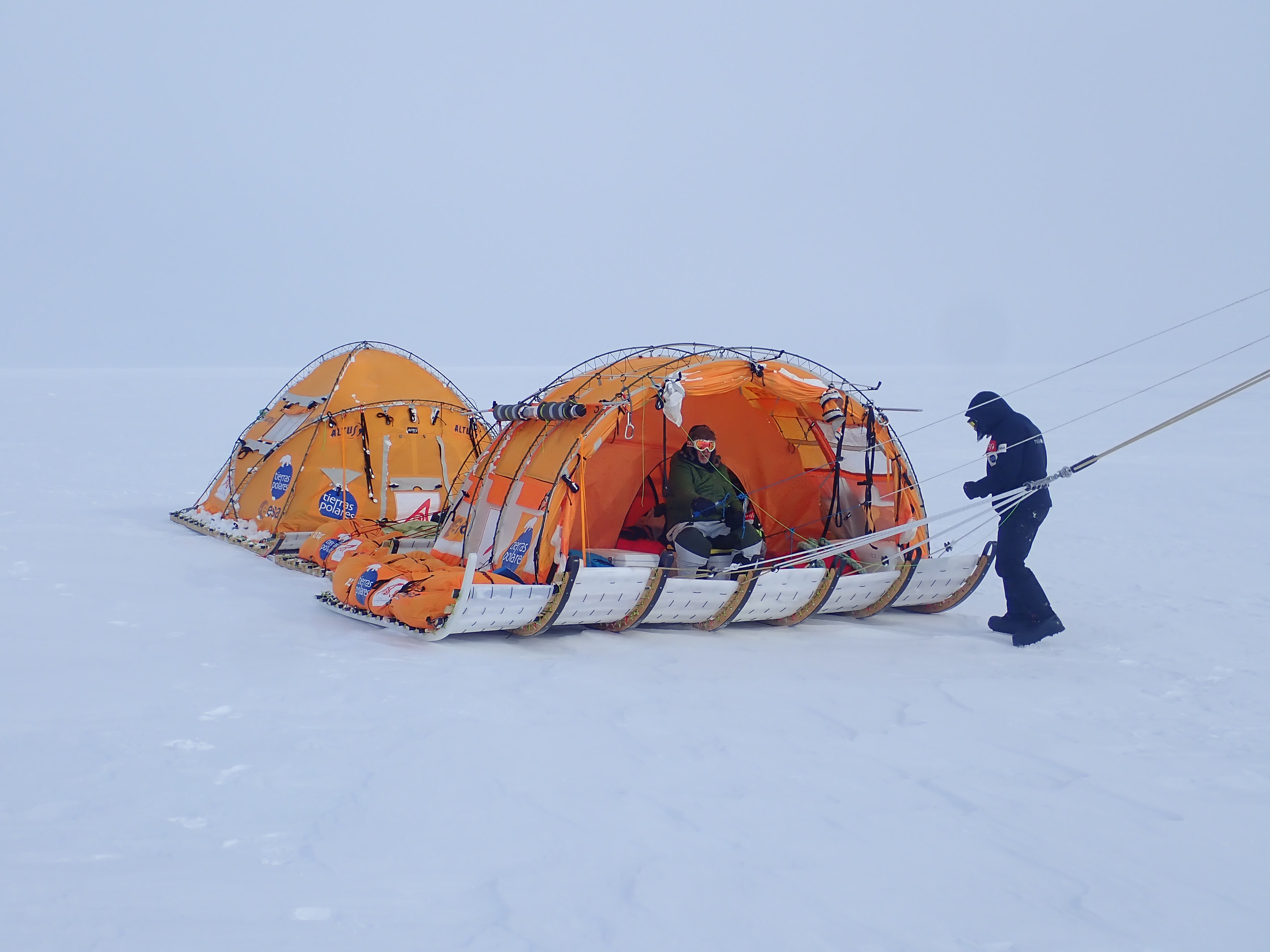
Forty days after setting out, the team reached the Japanese research station at Dome Fuji (3,768m). Established in 1995, it is named after the nearby 3,810m ice dome, which forms the third highest summit on the East Antarctic ice sheet. Dome A (4,093m) and Nilsen Plateau (3,938m) are the first and second highest. Photo: Inuit WindSled.

An elated team at the end of the project. Members’ skills included civil engineering, biology, mountain guiding and business. Their adventure background ranged from a ski traverse of Svalbard to a north-south crossing of Iceland to a 14,000km traverse of the Arctic. Photo: Inuit WindSled.

